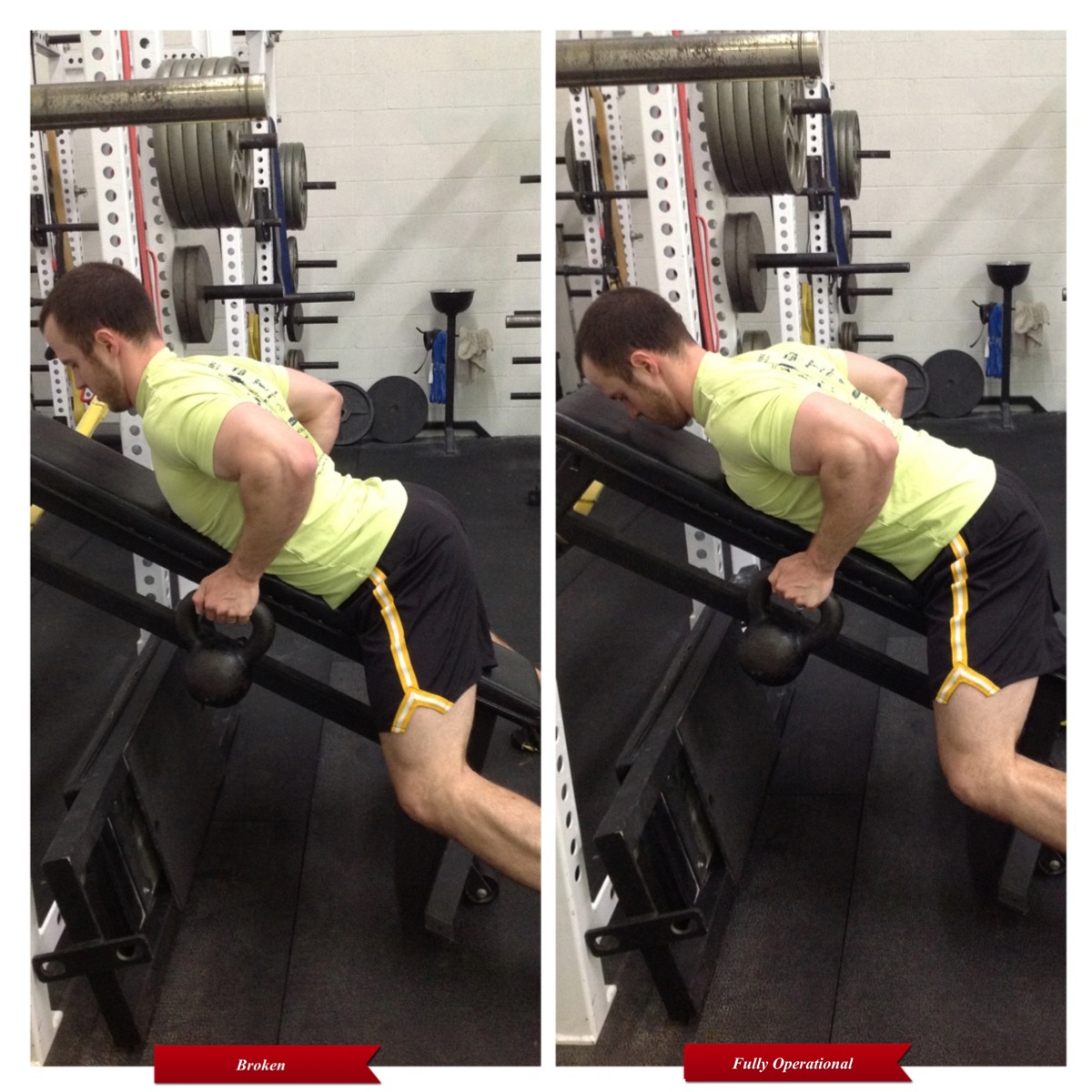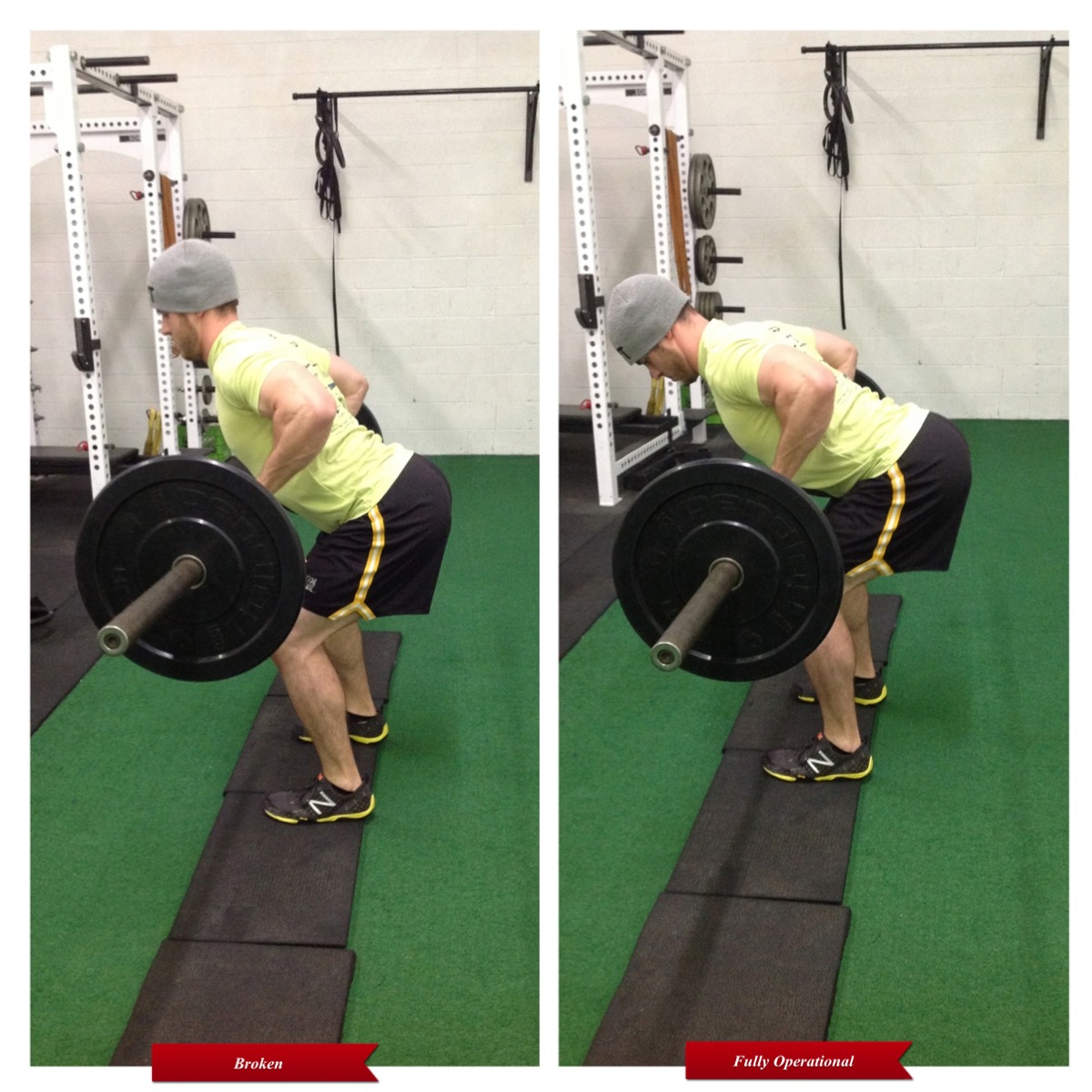An Overuse of the "Arch Your Back" Cue, and How to Create Better Positioning During Your Lifts
"Pull your chest through.""Stick your chest out." "Put your shoulder blades in your back pocket." "Arch your back....I said, ARCH!"
If you've ever set foot in the weight room, I bet you've heard at least one of the above verbal cues spat out hundreds of times by a coach or trainer in the middle of teaching someone to lift weights.
And for good reason, considering that this is what I usually see when I watch the average gym-goer set up to perform a deadlift or row:
Not pretty, right? And something that should make you want to throw your face into an axe.
We know that lifting with a round back (flexion), at least in the lumbar region, is exceedingly dangerous, large thanks due to Dr. Stuart McGill and his research showing that repeated lumbar flexion, especially under load, is the exact mechanism for disc herniation.
So, what did we do as an industry? We took the stance that if lumbar flexion is bad, then we should keep people as far away from that as possible. If extending (arching) your back is good, then the more the better, right? This thought process lead to us ensuring that everyone "arched their back," or "pulled their chest through" as much as humanly possible anytime they set up to perform a deadlift, row, squat, you name it.
Guess what? Excessive extension is bad, just as excessive flexion is bad.
Overextension in the lumbar region can be just as evil as flexion. What shows up on your doorstep when you do it for too long? Hellooo to low back pathology, to spondy and her cousins. Hello to facet irritation. Hello to an even greater anterior pelvic tilt. Hello to crazy stiff lats and a weak anterior core. Hello to literally cranking on the passive restraints of your back (not a good thing). Goodbye to stronger lifts.
Below is a bevy of comparisons I've put together, showcasing what is commonly seen as good form (sticking your chest out, or overarching your back), alongside a picture of what your back should look like. The pictures on the left show broken, ugly positioning while the pictures on the right display stable and sound positioning.
Instead of performing our lifts with a hyperextended spine, we want a neutral spine. A neutral spine is a happy spine.
TRX Row
Seated Row
Chest-Supported Row
Bent-Over Row
Anti-Rotation Press
Bent-Over Barbell Row
Goblet Squat (Top)
Banded W
Deadlift (Middle)
It may surprise some of you to see what you may have initially thought of as good form, to actually be broken. And knowing how to cue neutral spine is of even greater importance when you're working with someone with extension-based back pain, or even an athlete who lives and breathes in an extended posture.
And it's no wonder why you see so many ugly internet videos of people performing high rep snatches, with the top of each one looking something like this:
When we have crazy stiff lats and a weak anterior core from performing everything in extension, it's no wonder why so many of us look like utter poo poo when we go overhead.
Closing Thoughts
- Telling someone to arch their back or stick their chest out isn't always a bad thing, you just have to use discernment as to when to use it. Some people - i.e. desk jockeys or those with very kyphotic postures - may actually need to extend their back as much as they possibly can, just to get to neutral! These are the folks you may find yourself cueing "chest out," "arch your back" over and over again to help them get out of flexed (rounded) posture into neutral, and, depending on the population you work with, you may in fact find this scenario way more common than the reverse (those who shoot way past neutral into hyperextension).
- For those with flexion-intolerant back pain, it can be O.K. to cue a minor bit of extension during core stability exercises, lunge variations etc. just to drive a bit of intended extension and help them get out of the flexed posture they sit/stand in.
- It's kind of ironic that fitness professionals always freak out about anterior pelvic tilt, and yet the way we we've been cueing exercises have only exacerbated the issue! We bang ourselves against the wall when we stretch our hip flexors into oblivion and then go right into a deadlift or glute bridge with a hyperextended spine.
- The captions "broken" and "fully operational" in the pictures above are references, of course, to the different statuses of the death star ray gun in The Return of the Jedi.











